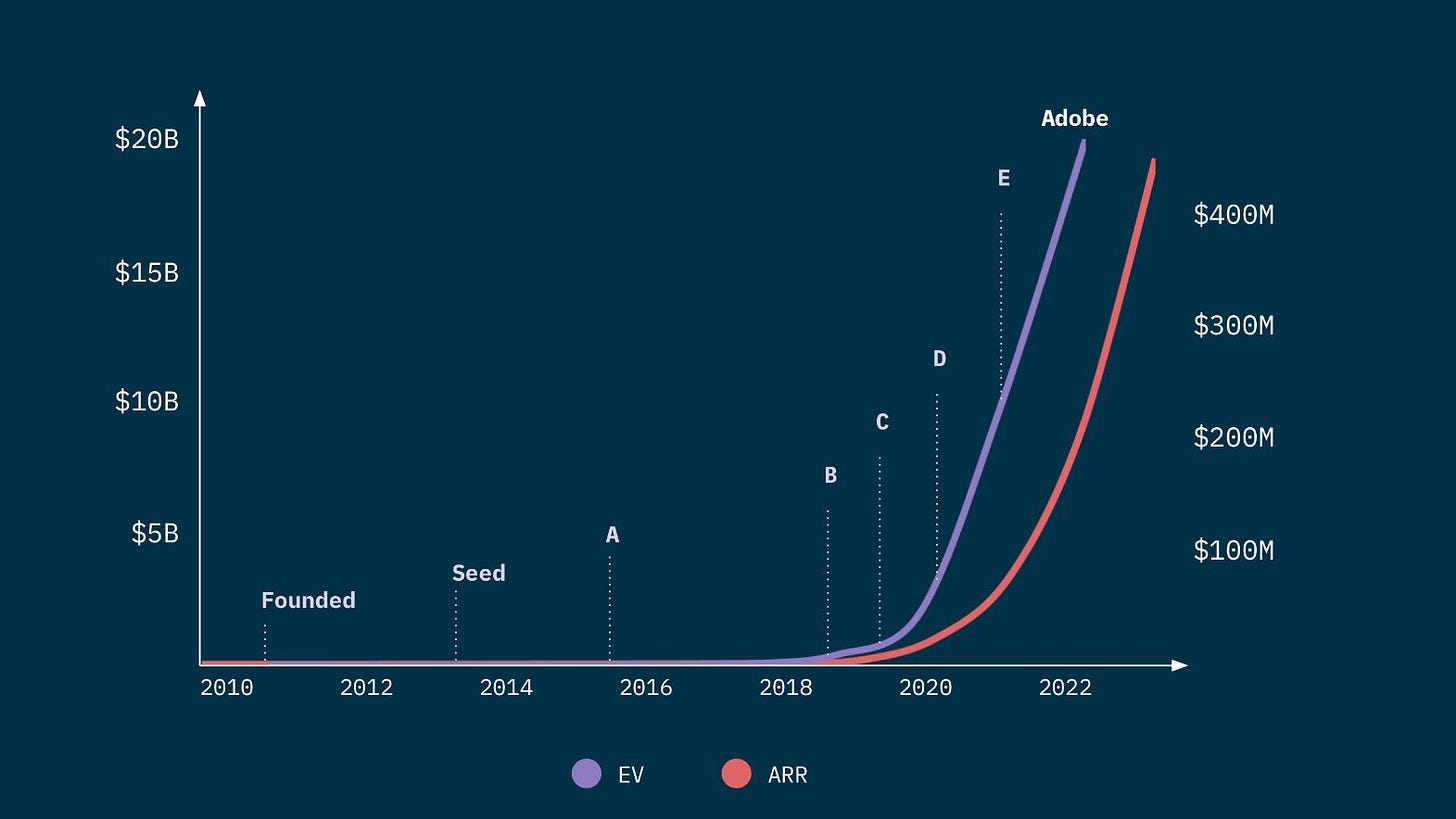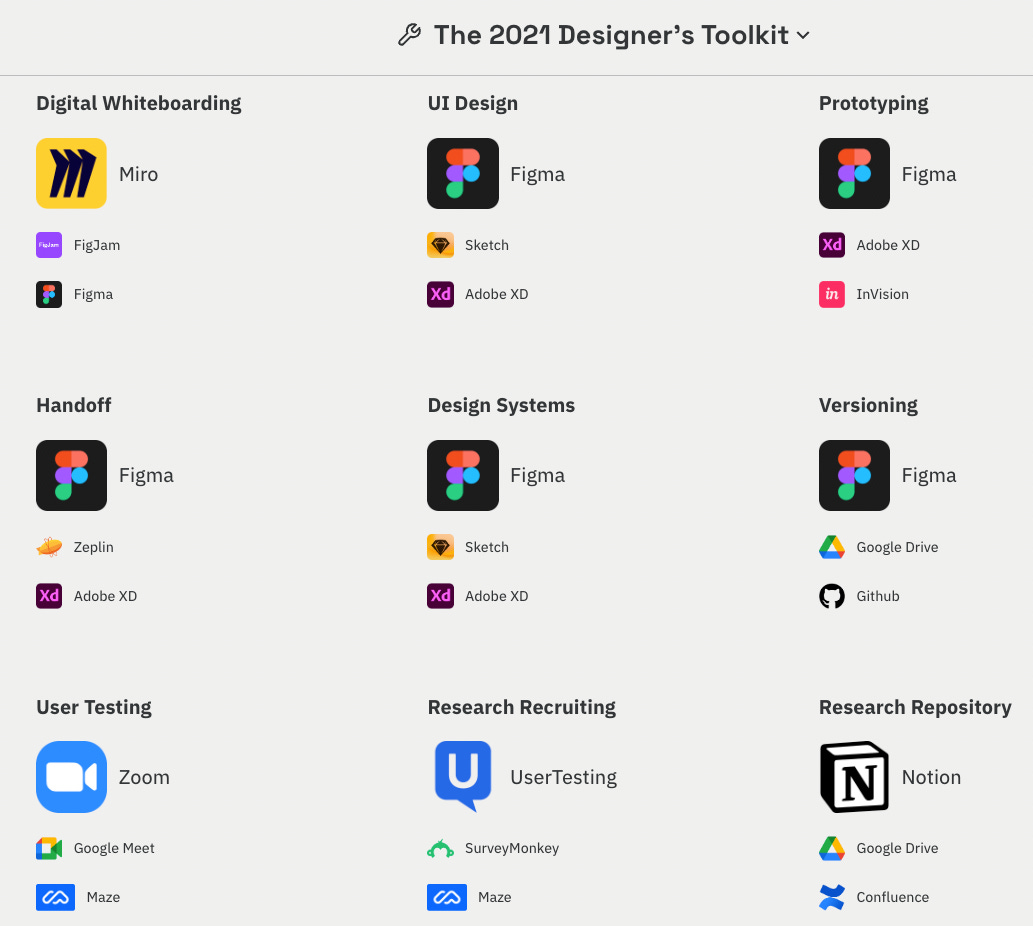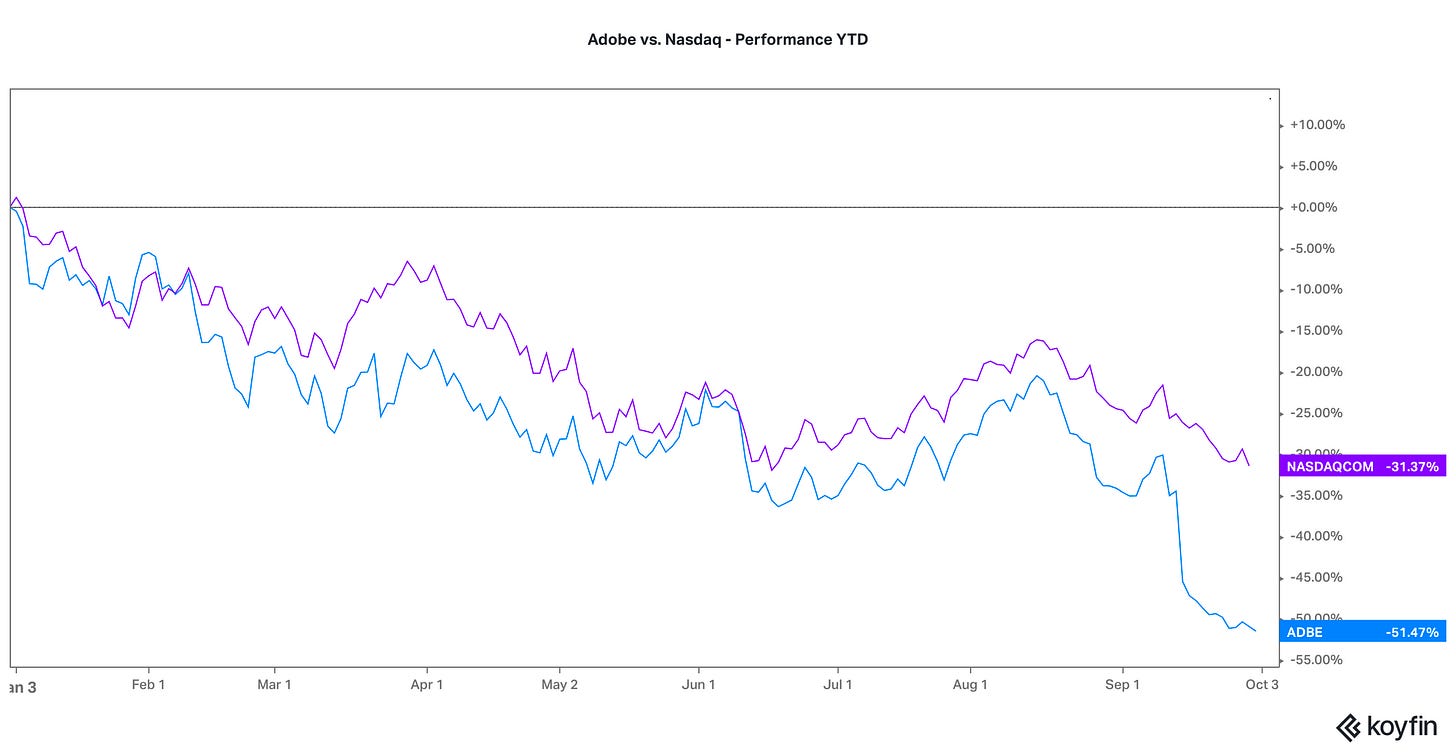Hi, it’s Alexandre from Eurazeo. I’m investing in seed & series A consumer and consumer enablers startups all over Europe. Overlooked is a weekly newsletter about venture capital and underrated consumer trends. Today, I’m breaking down Adobe’s acquisition of Figma.
In this post, I’ll break-down Adobe’s $20bn acquisition of Figma. I wanted to wait a couple of weeks to have the time to think deeply about this acquisition and to read as many things as possible on both companies. “The owl of Minerva spreads its wings only with the falling of dusk” as Hegel writes. I’ll combine both my opinion on the acquisition with everything I could read on the deal either from primary sources (i.e. Adobe, Figma) or secondary sources. I divided the post into the following sections:
Part I - What is so special about Figma?
Part II - Why is Adobe acquiring Figma?
Part III - What does it say about the current tech environment?
Part IV - What’s next?
Part I - What is so special about Figma?
As a quick refresher on Figma, it’s an UX/UI product design platform. It was started in 2012 by Dylan Field and Evan Wallace in 2012 leveraging Dylan’s $100k Thiel Fellowship. In 2013, it raised a $4.0m seed round from Danny Rimer at Index. It took them several years and ideas to arrive at Figma’s premise to democratise product design by creating a design platform in the browser using WebGL which is a Javascript API for graphics rendering. In 2015, Figma started a private beta and raised a $14m series A from Greylock. In 2016, it launched publicly. In 2017, it started to monetize and made its platform self service. In 2018, it launched its enterprise plan and raised a $25m series B round with Kleiner. In 2019, it raised a $40m series C with Sequoia. In Apr. 2020, it raised a $50m series D at a $2bn valuation with a16z. In Apr. 2021, Figma launched its second product called FigJam which is a web-first and collaborative brainstorming platform similar to Miro. In Jun. 21, it raised a $200m series E at a $10bn valuation with Durable Partners. In Sep. 22, Adobe acquired Figma for $20bn which is a 50x EV/ARR multiple on Figma’s $400m forecasted ARR.
I believe that Figma is a unique startup for the following reasons:
Figma is creating a new paradigm in design compared to the previous generation of design tools: (i) web-first vs. desktop first, (ii) multi-player vs. single player, (iii) for all stakeholders involved in design decisions vs. for designers only, (iv) easy to use vs. usable only by professional creatives, (v) freemium vs. paying. Figma has pioneered this playbook and applied it to UX/UI product design but many other startups are replicating it to go after other design formats handled by Adobe’s creative suite (e.g. motion design, 3D design, graphic design, etc.)
Figma is winning the UI/UX design category by far compared to its direct competitors AdobeXD and Sketch. In the past 4 years, Figma has been massively adopted across organisations (e.g. the below graph shows that out of 2k+ designers surveyed by UX Tools in 2021, 77% of them used Figma for UI design compared to 25% in 2018). Figma has become the no-brainer UX/UI design platform to start a project. Figma has been also replacing legacy design stacks in large organisations which is impressive knowing that design files are not compatible across design tools. With Stripe or Ramp, Figma is one of the few startups which success seems inevitable.
But Figma is much more than a simple UI/UX design platform. It builds an end-to-end product development platform with an ambition roadmap to go upstream (white-boarding, design systems) and downstream (developer handoff, prototyping). Figma has managed to bring all the stakeholders in an organisation involved in design decisions or impacted by design decisions on its platform. I was super impressed to learn that 65% of Figma’s users are not designers but other stakeholders interacting with designers (e.g. PM, developers, etc.).
Figma applied the “go-slow to go fast” startup playbook.
It took Figma 3 years to find product market fit and an additional 2 years to start monetising.
UX/UI designers are spending several hours per day into their design platform. It was key for Figma to have a mature product to make designers shift their working OS to Figma.
Figma started by nailing product market fit with designers and by making its product widely used in organisation beyond the design team before implementing and scaling monetisation.
With this strategy, Figma reached massive results with an exponential and sustainable high growth. I’m especially impressed by Figma’s trajectory between 2019 and 2021 almost tripling twice its ARR from $23m to $77m to $210m.
I love startups following this playbook because slowness in the early days is often needed to create a new category and to build moats around your business.
Figma is led by a user-obsessed founder. Dylan is known for spending hours reading support tickets and Figma’s mentions on social media. Also, for traveling to visit Figma’s enterprise customers to understand how they use the product and to brainstorm ideas for Figma’s future roadmap.
Part II - Why is Adobe acquiring Figma?
The main rationale behind Adobe’s acquisition of Figma is to remove an existential threat to preserve its monopoly on the design tool market. All other reasons are secondary. Adobe has a creative suite with 20+ products for different design formats (photos, videos, 3D design, motion design, UX/UI design). It launched Adobe XD in 2015 to go after the UX/UI design format because (i) UX/UI design was on the rise, (ii) it was seeing the rise of Figma/Sketch and (iii) because Photoshop which was hacked by designers to do UX/UI design was starting to be too limited. Adobe failed to compete with Figma because Adobe’s product suite was operating in an outdated design tooling paradigm (single player, desktop based, focus on professionals, focus only on designers, paying product, etc.). Adobe sacrificed a portion of its market share and its balance sheet in order to save its future in a key design tooling category in which it was out-executed by Figma.
Adobe wants Figma to support its efforts to bring its creative products suite to the new design tooling paradigm created and led by Figma (e.g. “accelerate our vision for collaborative creativity”, “accelerate the delivery of Adobe’s Creative Cloud technologies on the web”).
Adobe will boost Figma’s go to market leveraging Adobe’s relationship with enterprise customers and Adobe’s global presence.
Both companies will also implement product synergies (e.g. merging FigJam with Acrobat and Adobe Express “to make content creation more efficient, collaborative and fun” or integrate Adobe’s expertise in imaging, photography, illustration, video, 3D and font technology into Figma).
Figma allows Adobe to expand its user-base to users that are designers within organisations. Historically, Adobe’s creative product suite was targeting only creative professionals. It has recently expanded its reach to non professionals who had creative needs. With Figma, for the 1st time, Adobe will be able to go deeper into organisations by targeting other functions such as product managers, marketers or developers.
Part III - What does it say about the current tech environment?
Allergic market reaction from public market investors. Adobe has lost more than 25% of its market capitalisation since the deal announcement. In my opinion, investors disliked (i) the high price multiple Adobe paid for Figma, (ii) the fact that the acquisition proves that Adobe knows that its creative products suite is at risk of being disrupted by challenging startups, (iii) the mismatch between Adobe which is a cash-flow generating machine and Figma which is still a growth story with several years ahead of itself before generating massive cashflows.
VCs are under-pressure to show real returns to their LPs. With the tech public market crumbling down and the IPO window closed for growth startups, LPs are putting pressure on VCs to prove that valuation jumps in 2020 and 2021 in their portfolio are more than paper gains. Even if Figma had the potential to become a $100bn standalone public company in the next decade, Figma’s investors are more satisfied than ever to give back real gains to their LPs. I’m not sure that they would have done the same if they had the same offer on the table last year.
Scrutiny from the anti-trust regulator. I won’t be surprised that the US anti-trust regulator tries to block this acquisition. In my opinion, it would be legitimate. A tech giant should not be allowed to acquire direct competitors which are creating a new tech paradigm, are bringing massive product innovations to the market and are on their way to substantially threaten incumbents. It’s an acquisition that is in the same category as Facebook acquiring Instagram and Whatsapp or as Visa trying to acquire Plaid. It should not happen because in the long run, these acquisitions harm customers and slows down innovation.
Part IV - What’s next?
I was excited by the design tooling space before this acquisition. I’m now even more excited for 3 main reasons:
Figma and Canva proved that it’s not impossible to unbundle Adobe’s Creative Cloud’s product suite. Beyond UI/UX design (Figma) and graphic design (Canva), there are so many other design formats that Adobe is tackling with poor products (e.g. motion design, 3D design, video, photo, etc.)
Figma is less frightening as an Adobe’s subsidiary than as a standalone company. It was scary to compete in the UX/UI design category facing a company like Figma whose success seemed inevitable. Within Adobe, Figma will not be able to keep its product velocity and will lose certain top talents.
More specifically, I believe that there is an opportunity to build a UI/UX design platforms around two new paradigms that are emerging: (i) a code to design / design to code platform removing the massive pain-point of the handover between designers and developers, and (ii) AI-first design platforms.
If you’re building or investing in the design tooling space, I’d love to chat in the coming weeks. You can ping me at adewez@eurazeo.com.
Thanks to Julia for the feedback! 🦒 Thanks for reading! See you next week for another issue! 👋








